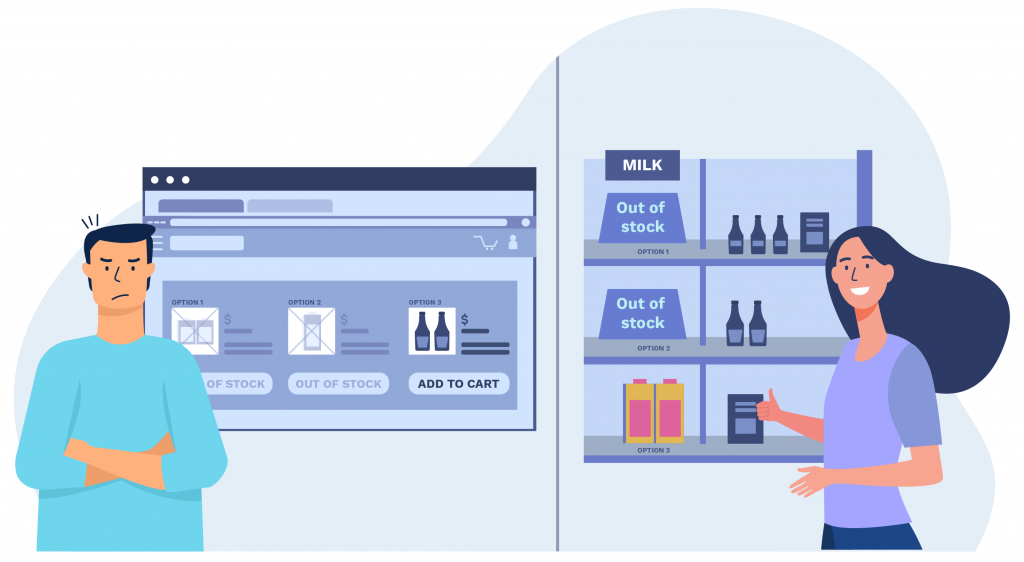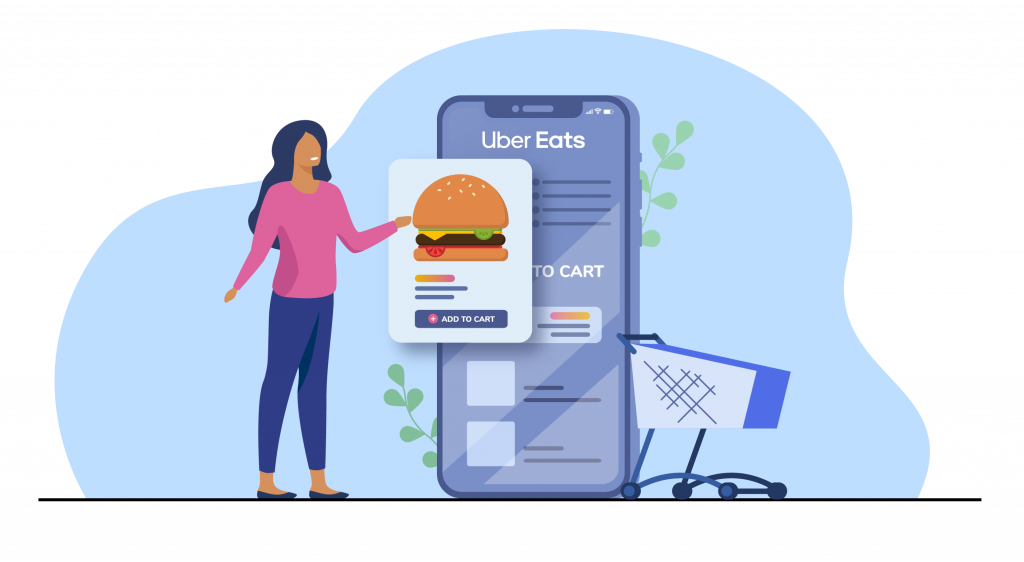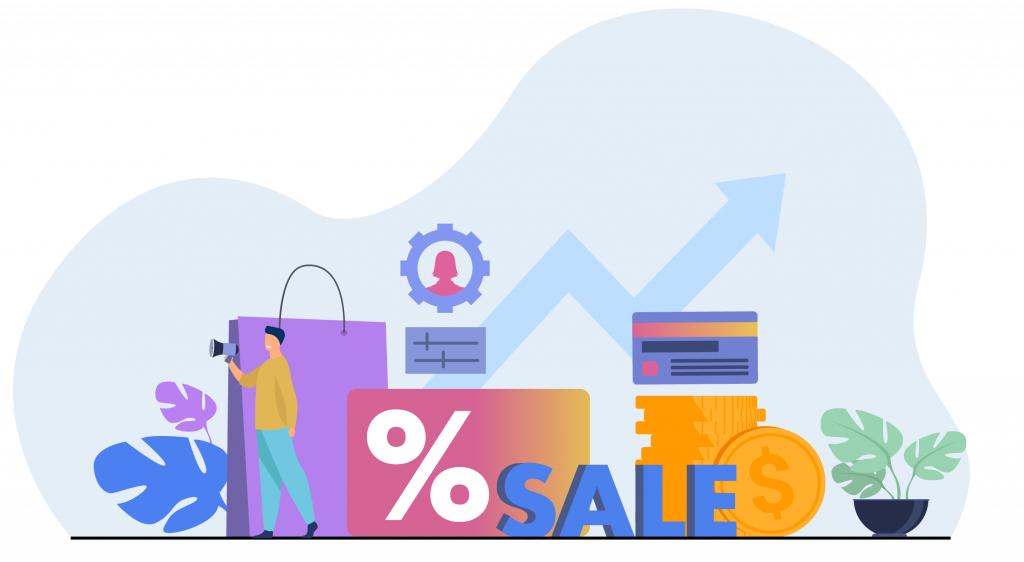AI-Powered Retail Optimization: The Merchants’ Perspective
AI-Powered Retail Optimization: The Merchants’ Perspective
Operational excellence is not a strategy, but retail optimization is proving to be a competitive difference-maker for consumer commerce enterprises in the current era. Retail, restaurant, and e-commerce firms that put Artificial Intelligence to work achieve better merchandising service levels and stronger performance outcomes.
Rama Rao, Ph.D., co-founder of Hypersonix and its Chief Product and Data Officer, maintains that advanced AI is key to maintaining a highly reliable supply chain, optimizing prices, and meeting shoppers’ rising expectations.

“Business decision making capability at the operational level in almost all cases trickles down to the customer experience, even if the two of them seem to be separated,” says Rao.
He observes that in the digital era, shoppers are fast losing tolerance for out-of-stocks and item substitutions. They expect near-instant access to the products they like, and they demand a curated merchandising experience and personalized, relevant offers.
Dr. Rao asserts that AI is a key enabler for consumer commerce firms so their managers and merchants can consistently meet service standards and provide excellent shopping experiences. In Part II of this three-part interview feature, he expands further on his vision for an AI-enhanced future. We continue with an exploration of AI from the merchants’ perspective.
Part 1: AI-Powered Retail Optimization: The Consumer Perspective
AI-Powered Retail Optimization
Q. We previously discussed the impact of AI on shopper experiences in some depth. Shall we turn our attentions to consider its impact on merchandising decisions?
Dr. Rama Rao: Well, I should begin by emphasizing that both are intertwined. One does not necessarily completely isolate itself from the other.
For example, consider a business activity that seems as far removed from the customer as possible, like the supply chain of a grocer, manufacturer, or fast-serve restaurant like McDonalds. What are they trying to accomplish with their supply chain?
Number one, they want to meet the demand for the right products. They want to be sure they are not out of stock on the items that are needed so they are not losing sales and share. If that situation were to persist, they could become irrelevant very quickly.

Managing inventory seems like an isolated back-office function, but if done poorly it can have massive repercussions from the consumer point of view. They might think, “I can never trust your promotions, because I can never find the sale items in your store – or online, because you’re always out of stock,” or “I find irrelevant items when I shop with you.”
Q. Are you saying those shopper perceptions begin with what you can consistently deliver?
Rao: Yes, and much more. There are entities that have had phenomenal mastery of their supply chain – the most obvious example you can think of is Amazon. They have brought that prowess to the customer experience which has been completely revolutionized with the promise, “You can get whatever you want within one day.” Now shoppers can get many items within hours. This sets a benchmark for customer expectation that is a high bar for all other retailers.
All retailers work very hard to manage out-of-stock because it means lost sales. When you can do it really well the customer is delighted. They find the right product available at the right location and the retailer is never out of the items they want, at the moment of decision. The flip side is that if you stock in excess of demand, your working capital is impacted, and in physical retail, you are putting shelf space pressure on items that are in demand. So the retailer is always trying to strike this balance across all items and all locations. And that is a complex optimization problem.
My point is that business decision making capability at the operational level in almost all cases trickles down to the customer experience, even if the two of them seem to be separated.
Q. So you look at inventory management from a customer experience perspective?
Rao: Exactly. A simple example. A shopper walks into a grocery store with a shopping list. They may not see a particular desired item on the shelf, but in their mind, there is not a big dissonance. They switch to the next best substitute, pick it up and go on out of the store. They may be slightly disappointed that they didn’t get the exact item, but they made a good choice with no two thoughts about it.
Q. Those in-store substitution decisions happen thousands of times a day. Aren’t they essentially invisible to the retailer?
Rao. That’s true. But now imagine the same experience when they shop online. They go to any online shopping service and start selecting items on their list. A notice pops up that says, “Sorry, this item is not available at this time. Here are some available substitutes we may select for you.” They stare at the three substitutes which are not the exact thing they want, but they can’t order their first choice. “Fine I’ll click this one.”
A day or two later, the person who picks that order starts texting from the store saying, “that substitute is not there, I’m going to substitute another item.” At this point the frustration level is going up. It may be the exact same choice they would have made in the store, but now the experience has brought so much focus on the substitution that it is now a massively high-friction interaction.

And guess what? The shopper’s frustration level is even higher if the item was on sale or promotion. Now the available substitutes may be lower quality or higher price. They have no choice but to go without or accept the alternate with the higher price.
This kind of breakdown happens because the retailer did not master their supply chain. They were not able to provide the right items at the right time.
It puts a high-friction spotlight on an experience that shoppers didn’t think twice about in the store environment. It’s because the choice has been taken out of their hands.
Q. Do you believe that more online orders have created a proportional increase in online disappointments?
Rao: Absolutely. Online experiences have the opportunity to make commerce slick and magical, but also have the potential to expose operational weaknesses. It causes a magnification of focus on certain experiences that are not necessarily optimal. It adds a time cost, and a decision cost.
And guess what – retailers can see it in data and dollars and cents. They start seeing order values drop. They start seeing migration away from their web experience, or to other platforms and retailers. That’s a moment where they risk losing the customer. Two clicks and the person is gone.
With one of our grocery retailers, this was one of the yardsticks they defined for the data and technology solution that we were bringing to them. They never said, “Hey, I want an AI solution.” They said, “Reduce my substitutions.”
Q. Do you think retailers worry that third parties intermediate between them and their shoppers?
Rao: Well, consider the value proposition of Instacart, Shipt and Postmates – the whole world at your fingertips. It’s similar to what Amazon says – you come to one place where you get anything you want.
And similarly, Uber Eats and Door Dash are intermediating restaurants. They have become your virtual food court.

And it is not just the intermediaries – new entrants with a different business model are also in the mix. The value proposition is different for born-on-the web branded entities that don’t have any physical presence. All they do is online ordering and delivery, so they are driving a lot of innovation. You see the emergence of virtual restaurants that exist in delivery mode only and of course the whole DTC (Direct to Consumer) segment with very well-known brands like Warby Parker and Dollar Shave Club. So, yes, this is putting pressure on existing brands.
Q. Do you see these new forms of competition as a reason why more retailers may be ready to change their processes?
Rao: That’s an interesting point. When we started talking about our solution with grocers and restaurants earlier this year, there was immediate attention. We saw that reacting to COVID made some retailers more open to new ideas. They were seeing new kinds of shifts and they were struggling to respond. While some were enjoying massive increases in sales, they were also trying to wrap their heads around the questions, “How do I serve this customer?” “How can I retain them?”
Q. Can you tell us more about how shopper-facing experiences are intertwined with operational decision-making?
Rao: Shopper experience and back-end decision making are closely tied together. At the basic level, if a retailer is not managing inventory, assortment, or prices well, shoppers are likely to be disappointed when they come to the store or place an order online.
We spoke previously about the substitution drama that too often happens with online orders. This is a digital experience where a seemingly simple process gets amplified so poorly in the worst way.
There are a host of other issues related to customer disappointment. Let’s take promotion execution. What happens if we promote an item based on some pricing algorithm, but don’t account for whether the retail environment has sufficient capacity to meet the increased demand?
When a shopper finds that the deal item is out of stock, this has a lasting impact on retailer perception and shopper trust. The shopper has a little less excitement when they see the next promotion due to learned skepticism about the store. They expect the item may not be there.

When promoting essential items like groceries, you may create and drive the wrong behavioral changes if you do not manage that well. Your ability to create trips and drive traffic can be undermined.
Q. Are there other operational areas influenced by AI that you identify as influencing the shopper experience?
Rao: The retailer’s ability to offer relevant personalization is another important area. It requires significant expertise to capture and interpret the floods of data that are now pouring in from customers’ digital and store experiences. Customers leave digital footprints everywhere, not just on the retailer’s mobile app or at the checkout.
Digital experiences, loyalty programs and mobile apps are so prevalent that now they have become table stakes for everybody to deliver that level of personalization.
When you recognize a loyal customer you can analyze their baskets and history. Are you sending offers for items that are meaningful to them? There is a certain quality of experience that says, ”They understand me.” What does it take to tease out and understand this by customer identity?
Of course, there are multiple steps here. You need to have mastered the data behind it and deployed your programs, all to finally be able to deliver that experience that is both personalized and anticipatory. The retailer gains an opportunity to understand individual purchase patterns and use those insights to decide what to offer to each shopper. The ever-present caveat here is doing it in a way that the customer doesn’t feel that it is intrusive or creepy.
It impacts the way you can deliver conventional promotions too. A lot of retailers have weekly or bi-weekly frequency. To be able to maximize their effectiveness you need to optimize your everyday prices first. Due to the complexity associated with it, many retailers run price optimization and make store-wide recommendations a few times a year at best.

By automating with AI technology, you gain a way to deliver deep, nuanced price recommendations daily or weekly as needed. Hypersonix is designed to enable those types of advancements.
Q. So the best absolute price does not always win. Is it still that magic mixture – ease of interaction or convenience, service levels, plus value?
Rao: You need to think that way about managing your inventory, knowing how to price, figuring out what to promote. In the end, it boils down to what you present to the customer. How are you delivering experiences that make it easier for shoppers to choose you?
It is not about optimizing around one operational dimension or another. As a retailer, shoppers are constantly disclosing clues about their preferences. In certain categories, they may care deeply about the price. In others, they may care about the right brand or ingredients or features. And these preferences will evolve over time. As innovative businesses lead the way in personalizing shopping experiences to these preferences, customers will feel they have a right to expect the same level of experience everywhere else they shop.
Ahead: In part three of this interview series, Dr. Rao addresses the strategic argument for Enterprise AI.






